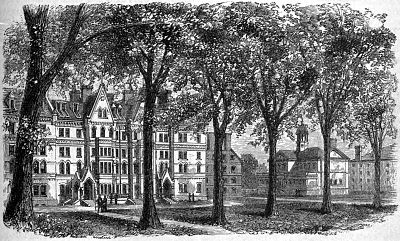 Higher Education Reform
Higher Education Reform A Sheepskin Isn’t the Same as a Balance Sheet
Our newspaper op/ed sections have recently been filled with talk of the changing state of higher education. College appears to be at or near some sort of turning point. Some liken higher education to journalism, noting that the way we transmit and receive information has changed so dramatically in terms of speed, cost, and accessibility over the past few decades that many newspapers have shut their doors as a result. Colleges thus need to adapt or die.
To get a good sense of this argument, you might check out Jeffrey Selingo’s College Unbound: The Future of Higher Education and What It Means for Students. According to Selingo’s book, there is a real concern that the old model of sending students to study for four years at some college far from home is simply no longer sustainable. Students can obtain the information they need to succeed in the world outside the traditional university system for much cheaper via internships, community college courses, massive online open courses (MOOCs) offered for free by major schools, and classes at a few for-profit schools. We may have some lingering romantic attachments to the four-year college system and the friendships, networks, and experiences we accrued there, but those won’t be enough to get parents to shell out a quarter of a million dollars to send their kids there. Colleges that refuse to adapt to this new world risk extinction.

This post originally appeared at Pacific Standard, a Social Science Space partner site, under the headline, “The Business of Higher Education: What We Miss by Looking Only at Balance Sheets.“
For another thing, the four-year college experience is, in my opinion, more than just classes, parties, and shared dorm rooms. It is actually the beginning of intellectual inquiry. The conversations—sometimes only tenuously related to class material—held both in classes and outside of them at coffee shops, bars, libraries, and dorm rooms are transformative. Students are actually grappling with new information and trying to understand its implications. They’re sometimes even unwittingly applying it to other areas of inquiry. To be sure, not everyone leaves college a dedicated scholar, but they almost invariably leave thinking differently from how they first arrived. That’s an experience that simply does not translate well to an internship or an online course. It’s also an experience that has value, although one that’s difficult to quantify or put on a balance sheet.
The four-year college experience is, in my opinion, more than just classes, parties, and shared dorm rooms. It is actually the beginning of intellectual inquiry.
At the heart of this debate is what seems like an increasing effort to think of a university as a business. The student (the customer) pays money (tuition) for a good/service (the knowledge in professors’ heads). The value of that transaction is the difference between the cost of attending the school and the benefit of the education. The cost is relatively easy to calculate; the benefit is murkier. Is it the expected lifetime income after having attending college as compared to the expected income for someone with just a high school degree? Should we factor in the transformative experience of attending college? How? Using market terminology for the university world has serious limitations here. It also tends to ignore research, which is a major component of what universities do. After all, professors don’t just transmit knowledge, they generate it. This research can lead to scientific discoveries, new consumer products, and advancements in our understanding of society, among other things. What is the value of that, and how do we assess it?
So I’m willing to concede that a university is a business, just as an elementary school, a church, and the U.S. Army are all businesses. All have balance sheets and can measure the cash flowing in and their expenses going out. But those figures ignore the public goods and less tangible benefits that are being provided. The school trains children in the norms of society. The Army protects you from invasions. A church may be either a poor investment or the best investment ever, but you won’t know for certain until it’s too late.
Perhaps we can think as a university in those same terms. Yes, it has a measurable budget and considerable operating expenses. But it also provides benefits to the custo… er, students and to society that are difficult to measure but are nonetheless vital. This doesn’t mean that universities should ignore their expenses or that any cost is justified, but it also suggests that applying a purely business model to higher education may miss the point of this business entirely.






















































































